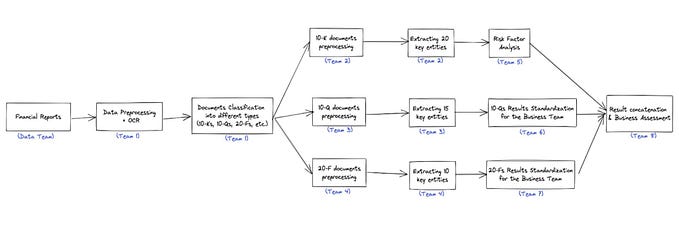What Is Market Segmentation and Buying Behavior?
Explore how to overcome marketplace alienation

Have you ever felt inadequate in how you serve your customers? Even without customer complaints, it’s possible to recognize that some segments of your existing customers aren’t getting the best service from you. Or, have you ever thought you could do more to reach a group of potential customers?
Lots of businesses suffer from a similar problem, marketplace alienation — an unintentional but costly oversight where some factions of customers or prospects receive better service than the rest. But don’t fret because market segmentation is the perfect antidote to your situation.
And today, we’ll explore how to overcome marketplace alienation.
Regardless of the size of your business, you must satisfy your customers to keep growing. This is easy to do when you understand your customers better — including what they want, care about, and expect from you. Once you have this tucked away, your customers will stick around to spur your firm on to growth.
As such, a business organization that knows its customers can serve and satisfy them better, motivating them to become or remain loyal, increasing their purchases of your products, and even serving as your ambassadors. And market segmentation techniques help businesses to understand their customers better.
There are numerous reasons why market segmentation works. Marketplace alienation, for example, can involve an individual’s failure to accept that the services offered were up to the standard expected. Or, it could also be that your service levels dropped in the said areas of the market.
Whatever the reason, you can draw more benefits by applying market segmentation correctly.
What Is Market Segmentation?
So, what is market segmentation? Market segmentation aggregates prospective buyers into clearly defined groups or segments based on common needs so that every group responds similarly to a given marketing action.
When implemented correctly, market segmentation allows companies to target several consumer categories more accurately, allowing the firms to match better with consumer perceptions of the true value of products and services.
Experienced marketers view market segmentation as a crucial component of effective market research, especially as it involves understanding the target audiences innately enough to subdivide it based on clear demographical factors such as age, household purchasing power, and more.
This element of market research is increasingly dependent on consumer data and other personal information collected directly or obtained from certain partners. The practice, especially its initial stages, identifies the target consumer groups, builds a rapport, and then tailors the company’s products, services, and packaging to suit the group.
This way, market segmentation minimizes operational and other risks by only delivering what a given market segment wants in ways that these consumers can relate emotionally, economically, and psychologically.
For these reasons, effective market segmentation is credited with increasing the company’s market share in the target segment market and the overall operational efficiency by focusing the limited resources on efforts most likely to bear the highest return on investment (ROI).

How To Implement Market Segmentation
Market segmentation is an age-old concept that divides current and potential customers into different homogeneous groups based on demographic, socio-economic, geographical, or psycho-graphic traits. But knowing the concept only sometimes translates into effective implementation.
In most cases, companies use market segmentation to define their target markets. However, you can further understand your audience and exploit existing opportunities by going deeper and learning more about your prospects. How should you do this?
As you implement your market segmentation strategy, keep an eye on different unforeseen variations within the target prospects, and be ready to respond as soon as possible.
So, how do you implement an effective market segmentation strategy?
Market Segmentation Process
The University of Waterloo identifies five steps to achieving effective market segmentation. These steps include the following;
(A) Group potential buyers into segments
Only start grouping your target customers into groups with sufficient first-hand data on them, their behaviors, and household purchasing power. This makes studying the choice population the initial step to market segmentation.
Afterward, you group your targets into predetermined categories based on the following five criteria;
- Potential for increased profit — the market segmentation process is extremely costly to the organization. It should only be applied if there’s a reasonably high likelihood of increased profits for the firm.
- Needs similarity amongst potential buyers — Market segmentation is only feasible if you can bring together sufficient numbers of potential buyers with similar needs, expectations, and other demographic characteristics. Find these similarities and group the respective persons into distinct market segments. Your organization can then take measured marketing actions towards each segment and reasonably expect similar consumer reactions.
- Different buyer needs among segments — Consumers in separate segments must also have different needs, wants, and expectations, with those within a given segment sharing similar expectations of your company’s products, services, and other propositions. Correctly classifying consumers into fitting groups lowers costs for the organization while increasing the efficiency of service delivery to consumers.
- Likelihood of marketing actions to reach segment members — Can a single marketing action reach all members of your chosen segment? If not, or the actions are unnecessarily complicated, your market segmentation is not optimal.
- Ease and cost of assigning buyers to segments — do not execute your market segmentation strategy if research shows buyer needs are too diverse that segmentation will result in numerous microsegments.
(B) Group products into categories
Having subdivided potential buyers into groups, it is paramount to classify your products, services, and other offerings into clearly defined groups that match certain aspects of consumer segments. You can achieve this by focusing on product variability, packaging, prices, and storage requirements.
Product classification for marketing purposes involves categorizing an entity’s products based on established consumer buying trends, often influencing how and where companies market said products. Usually a precursor to market segmentation, product classification impacts other aspects of sales, including distribution, pricing, and after-sales services.
Products are categorized based on different factors, including the type of products. The objective is to have clear product categories that can be matched with a specific consumer segment to enhance effective segmentation. Segmenting the market based on location or demographic characteristics is the most common criterion, but focusing on other factors could be just as rewarding.
© Develop a market-product grid and estimate market sizes
Do you know how big your potential market is? Knowing the size of the market allows marketers to develop an optimal market-product grid that evaluates the potential of each segment to generate sufficient profits needed for segmentation.
The grid should present the entire market with the respective segments mapped out. The proposed market segments are then ranked as having “no potential,” “small potential,” and “medium-size potential.” The most favorable are tagged as “most potential” market segments.
(D) Select target markets
You can rely on your market-product grid to decide which markets to implement segmentation in. The grid allows you to easily identify the perfect target markets, with segments having the highest market size estimates preferred.
While the market-product grid is a reliable tool for selecting a target market, implementing market segmentation successfully depends on your go-to-market strategy. During the implementation phase, the company must start with market segments promising the most reward.
(E) Take marketing actions to reach target markets
Whatever actions are taken depend on your segmentation strategy. You should identify target markets and the best actions required to benefit from them. This will mostly depend on the characteristics of each segment, but marketers also decide which actions are suited to specific market segments.
To Read the original article, please visit the original post







